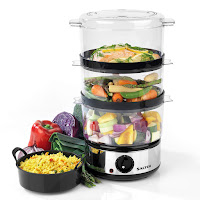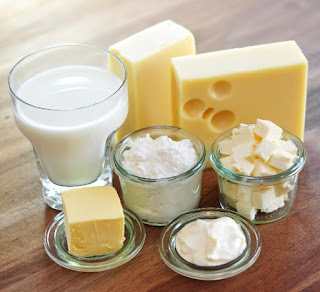Food Preparation || Cooking || Classification & Methods of Cooking || * PART - I *
COOKING / FOOD PREPARATIO
Food preparation is much more than a science, it is an art, for it is linked with the total culture pattern of people. Food preparation requires a sense of discrimination in the blending of flavours as well as of textures, colours and shapes.Food preparation, like any skill, requires a considerable amount of practice in order to achieve a high quality product with efficient use of time, money and material. The principles of food preparation are based upon the physical and chemical characteristics of the the various food groups.
Objectives of Cooking :
• Improves the taste and food quality :- Cooking improves natural flavour and texture of food. For example - rice with spices in making pulav, addition of turmeric.• Destruction of Micro-Organisms :- Micro-Organisms are present everywhere and some are useful in making curd, cheese and bread. For example - Salmonella.
• Improves Digestibility :- Cooking improves the texture hence it becomes more chewable. Cooking increases the access to enzymes and improve digestivelity.
• Increase Variety :- By cooking same food can be made into different dishes. For example - rice can be made into plain, pulav, lemon rice, biryani.
• Increases Consumption of Food :- Improvement in texture and flavour by cooking increases the consumption of food to meet our nutritional requirement.
• Increases Antioxidant Value :- Cooked tomatoes are associated with greater health benefits, compared to uncooked, because the heating process makes lycopene more easily absorbed by the body.
Lycopene - the pigment present in in tomatoes - it reuces the risk of some cancers.
• Concentrates Nutrients :- This may be due to removal of of moisture or using combination of foods or due to cooking procedures. Example - sweets.
Limitations of Cooking :
• Thiamin, which is heat sensitive, maybe lost during cooking. Water soluble nutrients leached into the water during cooking. Vitamin A and Vitamin C content maybe reduce due to oxidation and heat.• quality of protein may be reduced due to to destruction of certain amino acids during cooking. For example - bread curst has less quality of protein compared to the inside portion.
COOKING METHODS
Classification of Cooking Methods :-A. Moist Heat.
B. Dry Heat.
C. Combination Methods
A. MOIST HEAT METHODS
1. Boiling :
Boiling is cooking foods by just immersing them in water at 100°C and maintaining the water at that temperature till the food is tender. When foods are cooked by boiling, the food should be brought to a vigorous boil first and the heat then turned down, as violent boiling throughout tends to break the food.
Boiling is generally used in combination with simmering or aadhar methods, examples- cooking rice, vegetables or dal.
Advantages :
• It is the most simple method, it does not require special skill and equipment.
• Saludable starches can be removed and rice grains are separated.
• Protein gets denatured, starch gets gelatinized and collagen gets hydrolysed.
Disadvantages :
• Loss of nutrients, if excess water is used in cooking and the water is discarded 30% to 70%, water soluble nutrients like Vitamin C maybe lost. There is considerable loss of minerals especially Sodium, Potassium and Calcium due to leaching.
• Loss of colours, water soluble pigments, like betanin from beetroot maybe lost.
• Time consuming, boiling may take time and fuel may get wasted
• Loss of flavour and texture, boiled foods are not considered tasty because flavour compounds are leached into to the water.
2. Simmering :
When foods are cooked in a pen with a well fitting lid at temperature just below the boiling point 82°C to 99°C of the liquid in which they are immersed the process is known as simmering. It is useful method when foods have to be cooked for a a long time to make it tender as in the case of cheaper cuts of meat, fish, cooking custards, kheer, vegetables and carrot halwa. This method is also employed in making soups and stocks.
Advantages :
• Foods get cooked thoroughly.
• Scorching or burning is prevented.
• Losses due to leaching is minimum.
Disadvantages :
• There is loss of heat-sensitive nutrients, due to long period of cooking.
• Takes more time and more fuel is required.
3. Poaching :
This involves cooking in the the minimum amount of liquid at at a temperature of of 80°C to 85°C that is below the boiling point. Foods generally poached are eggs, fish and fruits. For poaching eggs, the addition of little salt or vinegar to the cooking liquid lowers the temperature of coagulation. Eggs get cooked quickly by poaching.
Advantages :
• Very quick method of cooking.
• Easily digestible seems no fat is used.
Disadvantages :
• It is bland in test.
• Water soluble nutrients maybe leached into the water.
4. Stewing :
Stewing is a slow method of cooking taking from 2 to 4 hours depending upon the nature and volume of foods being stewed. This method is generally used for cooking cheaper cuts meats along with some root vegetables and Legumes all put in the same cooking pot and cooked in stock or water.
Advantages :
• Loss of nutrients by leaching does not take place.
• Flavour is retained.
Disadvantage :
• This process is time consuming.
5. Blanching :
This is plunging foot into boiling liquid and immersing in cold water. This destroys enzymes presents in food hence used as preparation for preservation.
Food products normally blanched tomatoes, potatoes, carrots and Beans.
Advantages :
• Destroys enzymes in the food.
• Saves time during busy service periods.
• Fixes the natural colour of vegetables.
Disadvantages :
• A limitation to hot water blanching is the leaching of water soluble nutrients and the degradation of thermal sensitive compounds.
• Vitamins, minerals and other water soluble compounds, such as proteins, sugars, and flavour compounds diffuse out of the food and into the water, lowering the the overall quality of the food.
6. Steaming :
This method requires the food to be cooked in steam. The water should be boiled before the food is placed in the steamer. Here the food gets cooked at 100°C. Steaming is generally done in special equipment.
Recipes made by steaming are - idli,dhokla etc.
Advantages :
• It does not require constant attention.
• Nutritive value is maintained because there is no leaching and cooking time is less.
• Easily digestible, it is good for children and patients.
• Texture of food is better and becomes light and fluffy.
• Steamed foods have good flavour.
Disadvantages :
• Special equipment is required.
• Many foods cannot be prepared by this method.
7. Pressure Cooking :
In pressure cooking, escaping steam is trapped and kept under pressure so that the temperature of the boiling water and steam can be raised above 100°C and reduce cooking time.
Above 130°C to 140°C the pressure generated increases enormously for very small increments in temperature. Above 130°C massively constructed pressure vessels are required. Hence 120°C is an effective limit.
Foods cooked in pressure cooker are - dal, vegetables and meat.
Advantages :
• It takes less time to cook.
• Different items may be cooked at the same time.
• Fuel is saved.
• Requires less attention.
• Nutrient or flavour loss maybe less.
• There are less chances of scorching or burning.
Disadvantages :
• There may be mixing of flavours.
• Food maybe undesirable soft.
• Thorough knowledge of using the equipment is required. Otherwise accidents can happen.


















Comments
Post a Comment
Please do not enter any spam link in the comment box.